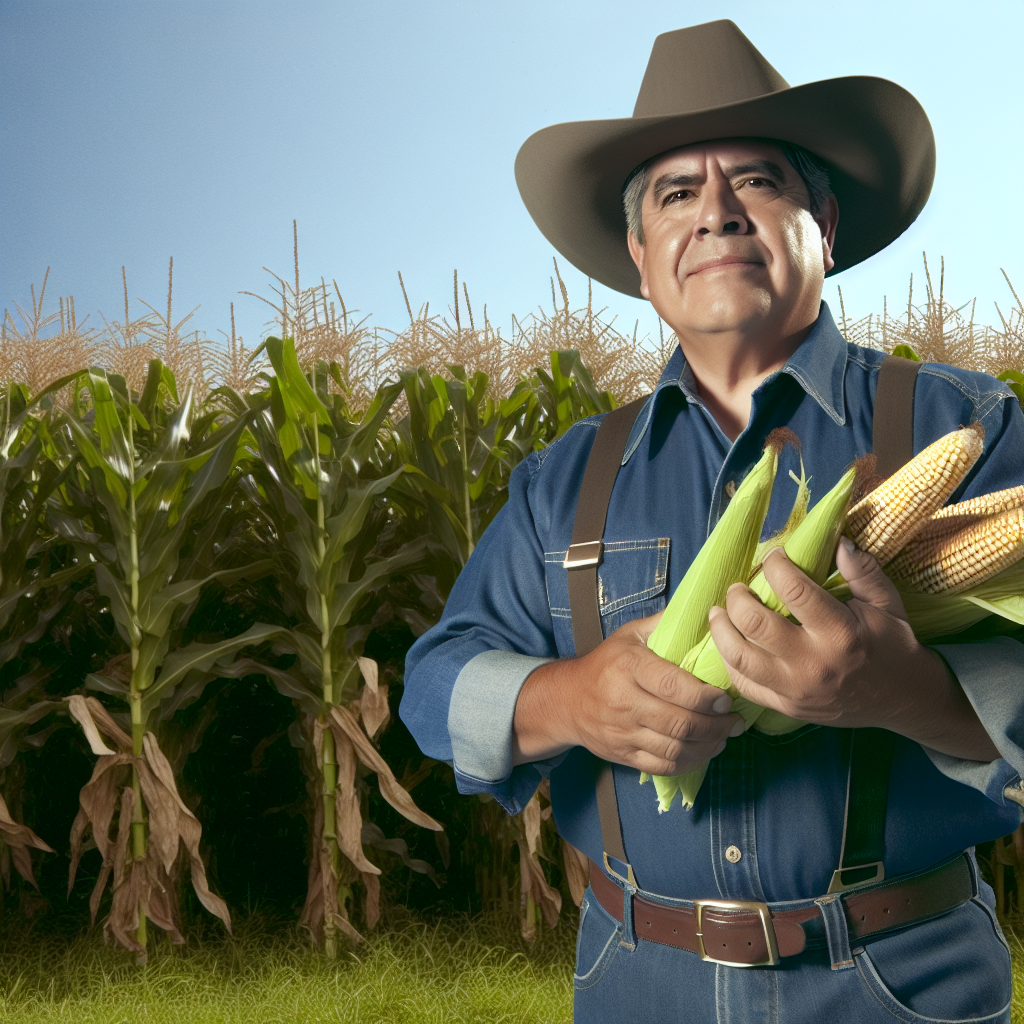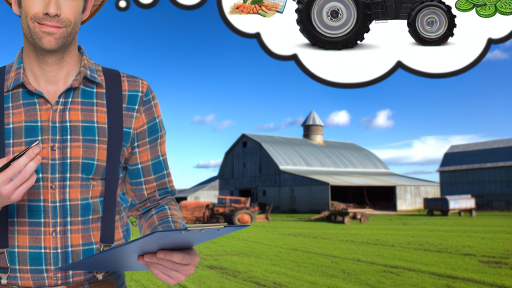Introduction to Farm Subsidies and Their Purpose
Farm subsidies play a crucial role in agricultural economics.
They provide financial support to farmers, ensuring stability in the farming sector.
Moreover, these subsidies aim to enhance food security and promote sustainable practices.
Types of Farm Subsidies
Various farm subsidies exist, including direct payments and price supports.
Direct payments offer income support to farmers regardless of market conditions.
Price supports maintain minimum prices for specific crops, ensuring farmers receive fair compensation.
Additionally, crop insurance subsidies protect farmers against losses from unforeseen events.
Impact on Agricultural Growth
Farm subsidies significantly contribute to agricultural growth.
They incentivize farmers to increase production and invest in modern technologies.
This increased productivity leads to economic growth in rural areas.
Furthermore, subsidies help stabilize the food supply chain, benefiting consumers.
Challenges of Farm Subsidies
Despite their advantages, farm subsidies face criticism.
Some argue they create dependency among farmers, inhibiting innovation.
Others highlight the environmental impact of intensified farming practices driven by subsidies.
Moreover, subsidy distribution can sometimes favor large agribusinesses over small farms.
Transform Your Agribusiness
Unlock your farm's potential with expert advice tailored to your needs. Get actionable steps that drive real results.
Get StartedThe Future of Farm Subsidies
The future of farm subsidies will likely involve reforms.
These reforms may focus on sustainability and equitable distribution of funds.
Policymakers will need to balance support for farmers with environmental responsibility.
Understanding farm subsidies is essential for promoting a resilient agricultural sector.
Historical Context of Agricultural Subsidies in the U.S.
Origins of Agricultural Subsidies
Agricultural subsidies in the U.S. trace their roots back to the Great Depression.
During this period, the government aimed to stabilize agricultural prices.
Farmers faced plummeting prices, threatening their livelihoods.
In response, the government introduced the Agricultural Adjustment Act in 1933.
This act marked the beginning of federal support for the agricultural sector.
Evolution Through the Decades
In the following decades, agricultural policies evolved significantly.
The 1940s and 1950s saw increased federal investment in farming.
Subsidies expanded to include price supports and farmer payments.
As a result, farmers gained more financial security during volatile market conditions.
Impact of the Green Revolution
The Green Revolution in the 1960s further shaped agricultural subsidies.
This movement introduced advanced farming techniques and technologies.
Subsidies encouraged farmers to adopt these new methods.
Consequently, crop yields increased dramatically.
Recent Developments
In recent years, agricultural subsidies have sparked robust debate.
Critics argue that they disproportionately benefit large agricultural corporations.
Conversely, supporters claim they are essential for food security.
The Farm Bill, renewed every five years, remains a central piece of legislation.
This bill governs funding and types of subsidies available to farmers.
Current Landscape of Farm Subsidies
Today, farm subsidies encompass a wide range of programs.
- Direct payments to farmers.
- Insurance programs that safeguard against crop loss.
- Loan programs designed to assist in cash flow issues.
As a result, these subsidies play a crucial role in the agricultural economy.
Showcase Your Farming Business
Publish your professional farming services profile on our blog for a one-time fee of $200 and reach a dedicated audience of farmers and agribusiness owners.
Publish Your ProfileDifferent Types of Farm Subsidies and Their Mechanisms
Direct Payments
Direct payments provide farmers with fixed subsidies regardless of market conditions.
These payments offer a secure income to help manage financial risks.
Furthermore, they encourage farmers to produce more without market pressures.
Price Supports
Price supports aim to stabilize market prices for agricultural products.
This mechanism ensures that farmers receive a minimum price for their goods.
Consequently, it protects farmers from price fluctuations.
Insurance Subsidies
Insurance subsidies help farmers manage risks associated with crop failures.
These subsidies cover a portion of insurance premiums for farmers.
Thus, they encourage farmers to invest in risk management strategies.
Research and Development Support
Research and development subsidies promote innovation in agriculture.
They fund projects that enhance productivity or sustainability.
Moreover, these subsidies lead to long-term improvements in farming practices.
Export Subsidies
Export subsidies encourage the sale of domestic agricultural products abroad.
They reduce the price of U.S. agricultural goods in foreign markets.
As a result, farmers can access new markets and increase their sales.
Conservation Subsidies
Conservation subsidies focus on sustainable farming practices.
These programs incentivize farmers to preserve natural resources.
Additionally, they support efforts to reduce environmental impacts.
Rural Development Subsidies
Rural development subsidies aim to improve infrastructure in farming communities.
These programs enhance access to services like education and transportation.
Ultimately, they contribute to the overall growth of rural economies.
Find Out More: How Tax Policies Impact Modern Farming
Impact of Farm Subsidies on Small vs. Large Scale Farmers
Understanding the Differences
Farm subsidies play a crucial role in agricultural economics.
They influence the success of small and large-scale farmers differently.
Small farmers often rely heavily on these subsidies for their survival.
In contrast, large-scale farmers usually have more capital to withstand market fluctuations.
Benefits for Small Scale Farmers
Subsidies provide financial support to small farmers.
This support helps them manage production costs effectively.
Additionally, subsidies can stabilize their income during poor harvests.
Small farmers benefit from grants and low-interest loans funded by government programs.
These financial aids often support sustainable farming practices.
Challenges for Small Scale Farmers
However, small farmers face unique challenges when receiving subsidies.
They often encounter bureaucratic obstacles in their application processes.
Furthermore, they may not have the resources to navigate complex regulations.
This can lead to inequities where only some small farmers benefit.
Advantages for Large Scale Farmers
Large-scale farmers generally have better access to subsidies.
They can utilize economies of scale to maximize their benefits.
Moreover, they often benefit from direct payments and crop insurance programs.
This financial support can enhance their production efficiency significantly.
Potential Downsides for Large Scale Farmers
Despite the advantages, large-scale farmers also face challenges.
Showcase Your Farming Business
Publish your professional farming services profile on our blog for a one-time fee of $200 and reach a dedicated audience of farmers and agribusiness owners.
Publish Your ProfileHeavy subsidies can lead to overproduction, affecting market prices.
Additionally, many large farms prioritize monoculture practices.
This can harm local ecosystems and reduce biodiversity.
The Role of Agricultural Policies
The impact of farm subsidies varies greatly among farmers.
Small-scale farmers often gain vital support, but they face challenges.
In contrast, large-scale farmers experience different risks and advantages.
Understanding these differences is critical for future agricultural policies.
Learn More: Common Tax Mistakes Farmers Should Avoid
Case Studies: Success Stories of Agricultural Growth from Subsidies
Enhancing Crop Yields in Paraguay
Agricultural subsidies in Paraguay significantly boosted crop yields.
In 2018, the government introduced incentive programs for corn farmers.
As a result, many farmers adopted improved seed varieties.
This adoption led to a remarkable 30% increase in corn production.
Moreover, the subsidies made fertilizers more accessible.
Consequently, the overall quality of crops improved.
Farmers like Mateo Arce reported higher profits.
His family’s farm transformed from struggling to thriving.
Boosting Dairy Production in New Zealand
New Zealand’s dairy industry flourished due to strategic subsidies.
The government invested in technology and infrastructure improvements.
These investments enabled farmers to adopt innovative practices.
Subsidies on machinery reduced operational costs for dairy farmers.
In turn, this led to increased milk production and quality.
The Dairy Cooperative reported record high outputs last year.
Local farmers benefitted from higher prices during peak seasons.
Emily Jenkins, a dairy farmer, praised the government support.
Revitalizing Organic Farming in India
India’s organic farming sector thrived with government backing.
Various subsidies encouraged farmers to shift to organic practices.
This shift resulted in a significant increase in organic produce.
Farmers received training on sustainable methods and techniques.
Consequently, the demand for organic products surged in local markets.
Sunil Patel’s farm transitioned from conventional to organic management.
His revenue increased significantly after receiving subsidy support.
The community noticed improvements in soil health as well.
Increasing Export Opportunities in the United States
American farmers benefitted from export-oriented subsidies.
The government provided financial aid for international marketing efforts.
Farmers expanded their reach to overseas markets.
This program boosted the production of high-demand crops like soybeans.
As a result, exports reached record levels in the last fiscal year.
Farmers like Jacob Thompson experienced a boost in profits.
His investments in marketing led to new partnerships abroad.
Community growth followed as local economies strengthened.
Showcase Your Farming Business
Publish your professional farming services profile on our blog for a one-time fee of $200 and reach a dedicated audience of farmers and agribusiness owners.
Publish Your ProfileEmpowering Women Farmers in Kenya
Kenya implemented a subsidy program focused on women farmers.
This program facilitated access to resources and training.
Women benefitted from financial support for various crops.
As a result, women-led farms achieved higher yields.
Miriam Njeri, a participant, shared her success story.
Her farm transformed, supporting her family and community.
The program also fostered a sense of empowerment among women.
It significantly impacted rural development in the region.
You Might Also Like: Eligibility Criteria for Farm Subsidies Explained

Economic Implications of Farm Subsidies on Local Economies
Boosting Agricultural Productivity
Farm subsidies significantly enhance agricultural productivity in many regions.
They provide farmers with the necessary financial support for investment.
This investment often leads to improved crop yields and farming efficiency.
Moreover, increased productivity can meet the growing food demands globally.
Stimulating Local Job Creation
Subsidies often result in the creation of new jobs in farming sectors.
Creating jobs boosts local economies and reduces unemployment rates.
Furthermore, increased employment has a multiplier effect on economic growth.
Local businesses, from suppliers to retailers, also benefit from this growth.
Enhancing Food Security
Farm subsidies play a critical role in enhancing food security.
They ensure a stable and affordable food supply for local communities.
Stability in food prices positively affects consumer spending power.
Ultimately, food security reduces the risk of hunger and malnutrition.
Influencing Land Use and Environmental Practices
Subsidies can influence farmers’ land use decisions significantly.
They encourage the cultivation of certain crops over others.
This focus can lead to intensified farming practices and land degradation.
To mitigate these effects, sustainable practices should accompany subsidies.
Fostering Innovation and Technology Adoption
Farm subsidies encourage farmers to adopt innovative technologies.
Investments in modern equipment and methods enhance productivity.
For instance, precision agriculture allows for more efficient resource use.
As a result, farmers become more competitive in both local and global markets.
Impact on Rural Development
Farm subsidies contribute positively to rural development.
They help diversify rural economies by supporting various agricultural ventures.
This diversification lessens dependence on a single crop or income source.
A thriving agricultural sector also attracts various services and infrastructure investments.
Delve into the Subject: Types of Farm Subsidies Available Today
Environmental Considerations: Subsidies and Sustainable Farming
Understanding Sustainable Farming
Sustainable farming plays a crucial role in preserving our environment.
It employs practices that enhance soil health and biodiversity.
Moreover, sustainable methods can significantly reduce negative impacts on ecosystems.
The Role of Subsidies in Promoting Sustainability
Farm subsidies can encourage sustainable farming practices.
They provide financial support for farmers transitioning to eco-friendly methods.
As a result, subsidies can foster innovation in sustainable agriculture.
Showcase Your Farming Business
Publish your professional farming services profile on our blog for a one-time fee of $200 and reach a dedicated audience of farmers and agribusiness owners.
Publish Your ProfileExamples of Sustainable Practices Supported by Subsidies
Many subsidies promote organic farming techniques.
These techniques reduce dependency on synthetic chemicals.
Additionally, subsidies often support crop rotation practices.
Crop rotation improves soil fertility and reduces pests.
Furthermore, conservation practices receive backing through various government programs.
Challenges in Implementing Sustainable Subsidies
Despite the benefits, challenges remain in subsidy implementation.
Not all subsidies prioritize environmental considerations.
Some programs may inadvertently support unsustainable practices.
Thus, policymakers must evaluate the effectiveness of existing subsidy frameworks.
Future Directions for Subsidies in Sustainable Farming
Future subsidy programs should align with sustainability goals.
Increased focus on climate resilience can guide these programs.
Moreover, integrating carbon farming practices can enhance environmental benefits.
Ultimately, effective subsidies can lead to healthier ecosystems and agricultural resilience.
Future Trends: The Role of Technology and Innovation in Subsidized Agriculture
Technological Advancements in Agriculture
Technology plays a critical role in modern agriculture.
Farmers increasingly rely on drones to monitor crop health.
Additionally, precision agriculture has revolutionized farming practices.
This technology optimizes resource use like water and fertilizers.
Moreover, data analytics enhances decision-making in crop management.
Innovation Driven by Farm Subsidies
Subsidies encourage farmers to adopt innovative practices.
They help cover the costs of acquiring new technologies.
For instance, many farmers invest in smart irrigation systems.
This technology conserves water while maximizing crop yields.
Consequently, innovation leads to increased agricultural productivity.
Impact of Biotechnology on Subsidized Farms
Biotechnology has transformed crop production significantly.
Farmers utilize genetically modified organisms (GMOs) to enhance resilience.
Subsidies often support research and development in biotechnology.
This funding provides crucial resources for developing new crop varieties.
As a result, farmers can tackle challenges like pests and changing climates.
The Role of Public-Private Partnerships
Collaboration between public and private sectors drives innovation.
These partnerships help share knowledge and resources effectively.
Subsidized farms benefit from enhanced research capabilities.
Industry leaders provide insights that shape sustainable practices.
This synergy fosters advancements in agricultural techniques.
Future Outlook for Subsidized Agriculture
The future of subsidized agriculture looks promising.
Emerging technologies will further streamline farming operations.
As sustainability becomes a priority, innovations will align with environmental goals.
Additionally, policies will likely evolve to incorporate new technologies.
Farmers who embrace these changes will thrive in a competitive market.
Additional Resources
Farm & Commodity Policy – USDA ERS
What is the Farm Bill? – National Sustainable Agriculture Coalition
Showcase Your Farming Business
Publish your professional farming services profile on our blog for a one-time fee of $200 and reach a dedicated audience of farmers and agribusiness owners.
Publish Your Profile



